All About Hair Systems - Past, Present & Future
Posted by Santana Fell on Apr 15, 2025
A live YouTube session with George Li, the owner of Superhairpieces, a renowned name in the non-surgical hair replacement industry, turned out to be a gateway into a powerhouse of knowledge, insights, and information on the past, present, and future of hair systems.
If you're curious about hair systems, their evolution, the industry in general, and what to expect next in the hair system world, you are in the right place!
Here is an excerpt from the Superhairpieces Live session. It focuses on key takeaways and highlights common questions and concerns of people who wear hair systems or those who want to try one for the first time.
Deep Dive into answering FAQs on Hair Systems with George Li - Superhairpieces Owner
George speaks on hair systems, changing mindsets and perceptions on hair systems - men’s toupees and wigs, best hair systems, industry facts, men’s hairpiece tips, tariffs affecting the cost of hair systems, and more. Read on to find out:
1. What major changes have occurred in the hair system industry over the last 20 years?
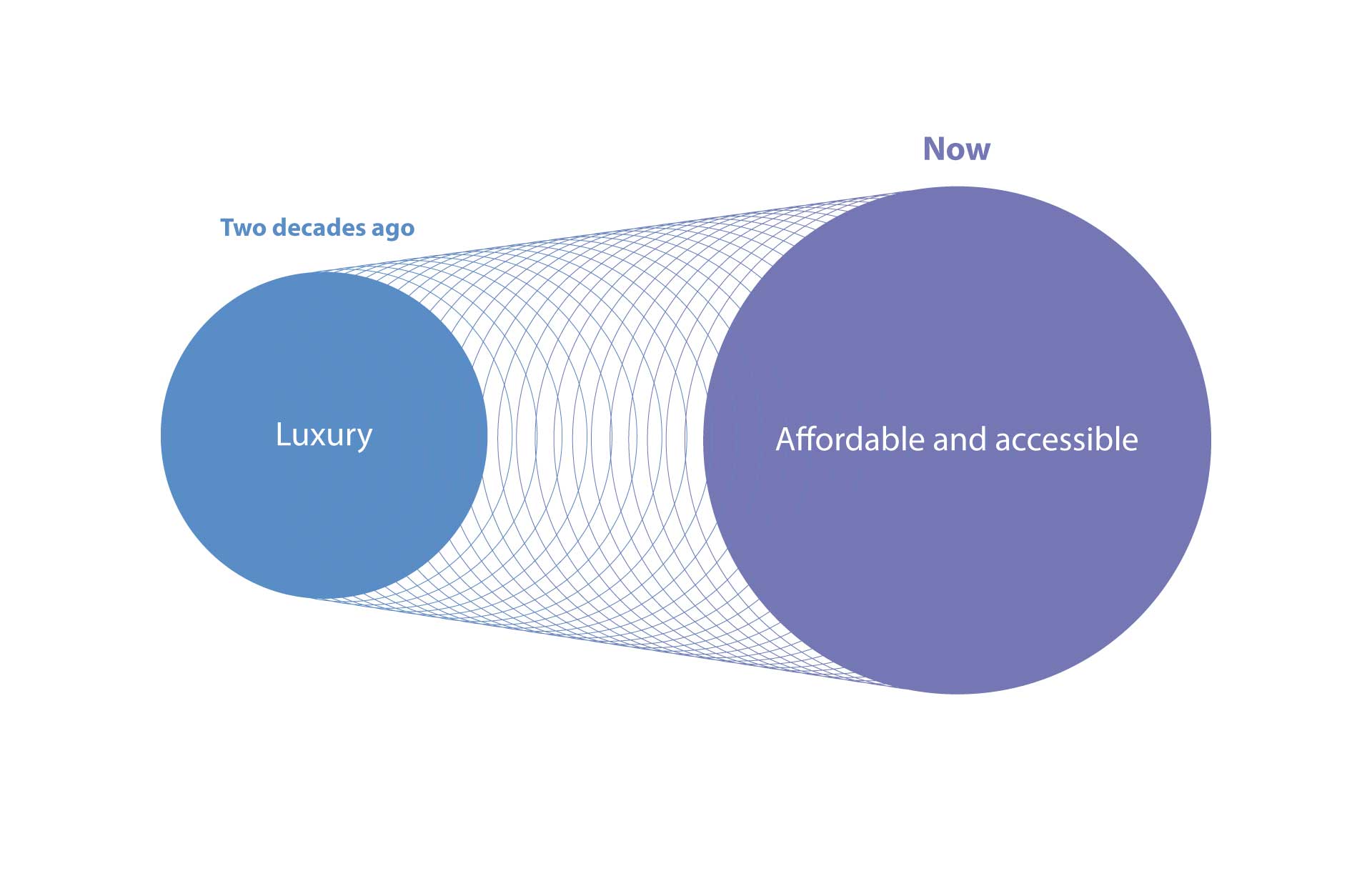
According to George, the evolution of the hair system market has been profound. Two decades ago, hair systems were considered a luxury, accessible primarily to the wealthy. However, with the rise of e-commerce and social media, knowledge about hair systems has spread, allowing more people to explore their options. Today, hair systems are affordable and accessible to a wider audience online, transforming how individuals approach hair loss.
2. What are the current trends in the hair systems industry?
George notes a significant shift in consumer choices. In the past decade, fewer people have chosen to shave their heads due to hair loss. Instead, more individuals are selecting solutions like hair transplants, fiber powders, and, notably, hair systems. Technological advancements have led to more natural and diverse options available in the marketplace.
3. Can you explain the cost evolution of hair systems?
In earlier days, hair systems could be extremely expensive, with some clients paying upwards of $55,000. However, George points out that due to competition and an increase in online purchasing, the prices have dropped dramatically. Now, hair systems are much more affordable, making them accessible to the masses.
George shares heartfelt experiences from customers transitioning to hair systems with Superhairpieces. Upon seeing their new look, many have been moved to tears, reflecting the emotional impact a hair system can have on an individual's confidence and self-esteem.
4. What is the go-to hair system recommended today?
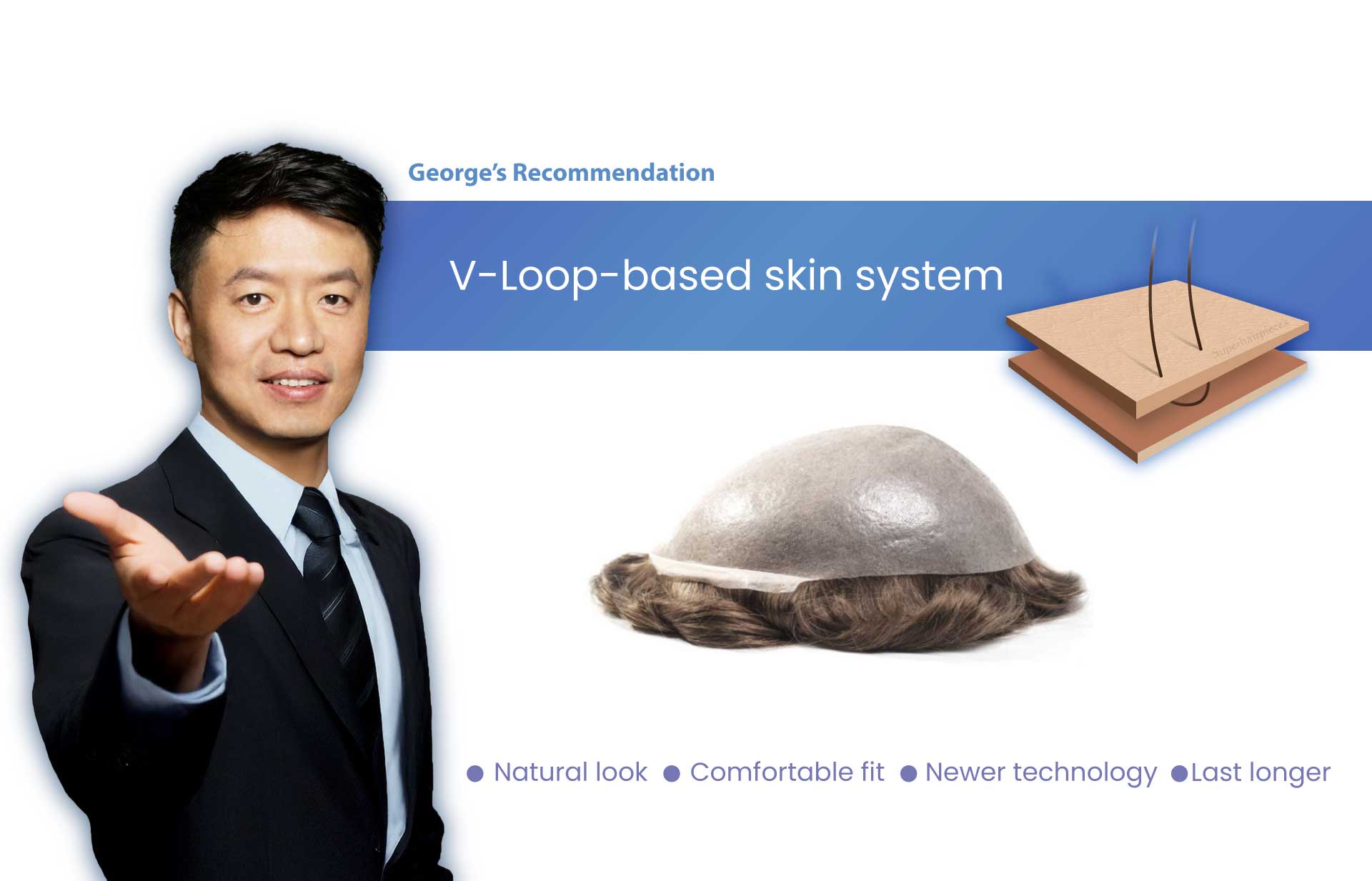
When asked about the best hair system available, George says his recommendation for hair replacement systems has changed over the last decade. While he previously would have suggested M100, a mono center with a clear polyurethane perimeter, he now recommends the V-Loop-based skin system, which offers a natural look and a comfortable fit. Unlike older models, this newer technology is designed for more extended usage while maintaining a high-quality, realistic appearance. Initially considered disposable, this system has evolved, allowing it to last longer—up to four to six months—despite still being marketed as a one-time-use product. The improved formula for the glue helps prevent hair shedding, making the system look more natural and durable.
5. Are skin base hair systems breathable?
People often praise skin systems for comfort, but some raise concerns about breathability. However, despite appearances, the skin can allow air to escape. Many customers report that the inside of the skin system stays dry even with perspiration due to its micro-holes. Users often prefer skin systems over mono systems, as they feel less hot and are more comfortable, almost like a second skin. The flexibility of the skin system means it fits various head shapes without needing custom fitting, avoiding issues like bubbles or gaps that can occur with other systems. Overall, users appreciate the more sensitive contouring of the skin system.
6. Is there any new technology in the hair system industry that we should get excited about?
George expressed that advancements in hair systems have not progressed as quickly in recent years as they did in the 1980s and 1990s. He acknowledged that earlier innovations significantly improved the realism of hair systems, making them less thick and more natural.
While noting a lack of new technologies in the past decade, he highlighted the V-Loop technology as an exciting development with the potential to change the industry significantly.
7. Are there any new products or services that we can look forward to?
We’ve identified a significant gap in the hair system market, especially among younger customers who may not have considered hair systems as a solution due to their historically high prices. Today, however, these systems have become more affordable and accessible, prompting many in their 20s and early 30s to explore them as an option.
Despite this interest, there's a steep learning curve for applying and styling hair systems. “For example, I remember watching Rick, a skilled barber, struggle a bit in his first video while trying to apply a hair system properly,” said George.
To address these challenges, we are focusing on making it easier for beginners to adopt this lifestyle. We’re creating educational content for our YouTube channel and offering live video support. Customers can easily reach out for assistance through the Superhairpieces website’s live help feature during North American office hours.
Our customer support team is committed to becoming well-informed about all aspects of hair systems. Our efforts have evolved beyond just helping customers find the right system. This year, we’re taking it a step further by offering guidance on how to apply it, measure correctly, and style effectively. We’re dedicated to making the entire process easier for everyone.
8. What's next for Superhairpieces?
George says that one of our key focuses is to enhance education and provide valuable information to our audience. We're making significant efforts to do this because it seems that our company is one of the few willing to share these resources with those struggling to navigate the world of hair systems. We have a fantastic team of hairstylists who share a common passion for educating and assisting our customers.
Our vision differs significantly from that of older hair system companies. We believe in transparency and the importance of sharing knowledge rather than keeping it hidden. By educating the community, we can expand the market, allowing the entire industry to benefit.
We are also working on expanding our market presence in Europe, which is an exciting opportunity for us.
9. What are the main differences between M101 and M101V?
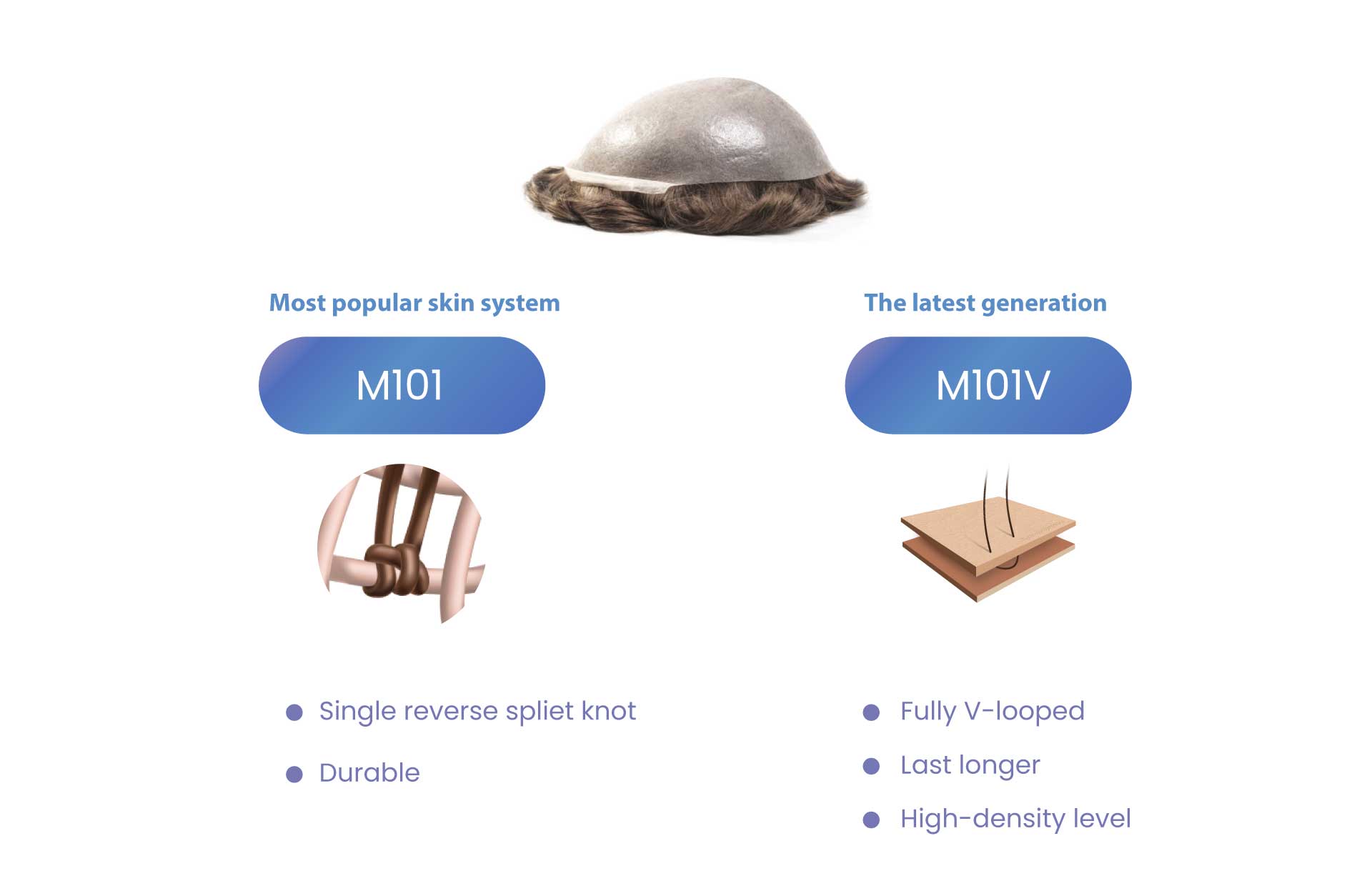
The M101 has historically been Superhairpieces’ most popular skin system. It is designed to combine a natural appearance with durability. Unlike its predecessor, M101 is not V-looped, which contributes to its longevity of about four months.
On the other hand, M101 V represents the latest generation of our skin systems. It shares a similar density with M101, but it's fully V-looped. This feature addresses the common issue of visible knots, especially noticeable with darker hair colors like numbers one and 11B. Many customers prefer this knot-free look, and M101 V effectively achieves that.
Previously, achieving this high-density level in V-looped systems was challenging, but we've successfully made it a reality. Customer feedback indicates that shedding with the new version is minimal, comparable to experiences with the older M101. Think of it as an updated version combining both best features.10. I have a lady client with no hair; which wig would be best for her?
I recommend two major wigs. The first is known as Fiona wig. It's very affordable and competitively priced. This is our first generation of silicon-based systems, and it's popular due to its cost and good hair density. The silicone base allows it to adhere securely to the scalp without needing glue or clips, making it a powerful option as a medical wig.
The second series is called Allure wig. It is silicon-based and includes a few models, such as Coco wig and Selena wig. Allure wigs are 100% handmade, so the price is slightly higher, but the hair quality is significantly better. Both Fiona and Allure use the same quality of hair sourced from China. However, for the Allure series, we try to preserve as much of the hair’s natural characteristics as possible. On average, the Allure series lasts longer than the regular women's series, so I recommend both options.
11. With Trump’s tariff on China, do you foresee an increase in hair system costs, or do you have some leverage to keep costs down because you also have a Canadian warehouse?
The recent tariff increase has impacted our business. About four weeks ago, we implemented a minor price increase—just around $10 to $20—to help offset some of the costs from the tariffs. After discussing this change with many of our customers, we found that everyone seemed to understand and agreed that it was a reasonable adjustment. We’ve absorbed most of the tariff increase ourselves.
As long as tariffs remain stable, we don’t anticipate changing our prices again. However, if negotiations between the U.S. and China lead to reduced tariffs, we will lower our prices accordingly. That’s our commitment to our customers.
12. How close should you cut to the hairline?
You can trim off any excess skin without leaving 1/8 inch or 1/4 inch. Some people prefer to keep a little extra skin at the front, but according to George, trimming it back to the hairline is best. The old technique of leaving extra lace or skin seems to have faded out over time. Ultimately, it comes down to personal preference rather than necessity.
13. How hard is it to hair-match?
There are different levels of sensitivity when it comes to matching hair color. Some individuals are very particular about achieving a perfect match, while others are more relaxed. People often have varying shades of color in different areas of their hair, so it's common not to see the same color throughout. For example, with brown or blonde hair, the color at the front may differ from the back. Similarly, with vibrant colors like green, the shades can vary across different sections.
For many, the specifics of hair color aren't as crucial, but other factors come into play. Processed hair colors tend to fade over time, especially lighter shades like light brown or dark brown, as opposed to darker colors like jet black, which tend to last longer. After a few weeks, particularly in summer, with increased sun exposure, you'll notice the color fading naturally.
When you first receive a hairpiece, it’s understandable to want an exact color match. We offer various ways to help with this process. The easiest option is to send us a photo; however, sometimes photos don’t accurately represent the color. In such cases, we can arrange a video call to discuss and find the right shade together.
If you're particularly sensitive about color matching, you can also request a few free color samples to help you find the best match. Just let us know, and we're here to assist you in finding the perfect shade for your hairpiece. If you already have an old system that matches well, you can send that to us for comparison. We're committed to helping you achieve the right color match in whatever way works best for you.
14. Can you duplicate a hairpiece? What's the turnaround time?
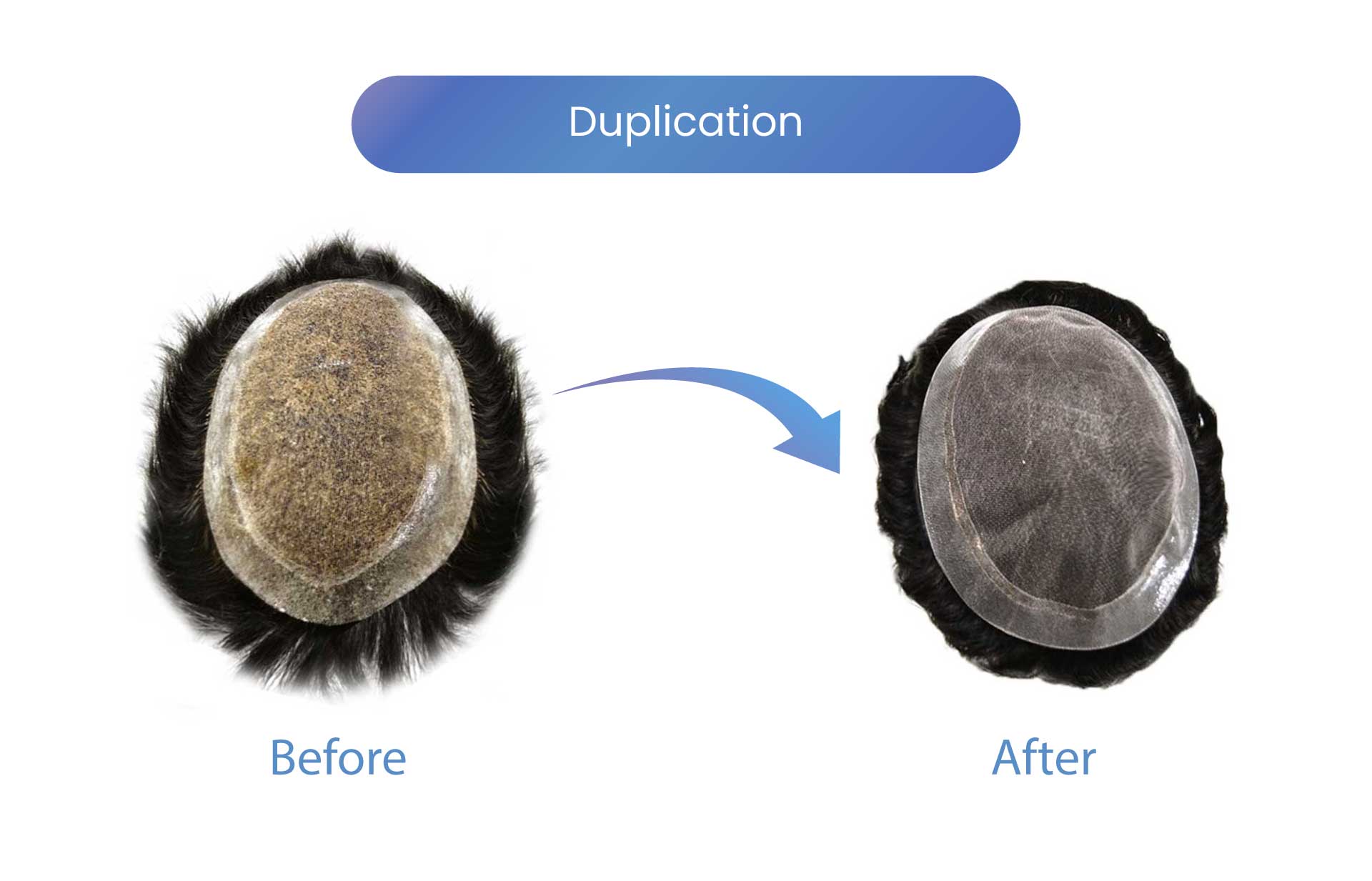
Certainly! We typically have a process for repairs and duplicate orders, and we frequently handle duplicates. Once you send your request, you'll receive a confirmation email indicating that we’ve received it. Please allow two to three days for one of our specialists to reach out to you. They will attempt to schedule a call to discuss your order. If we can't get in touch right away, we’ll leave a voicemail or send you an email to arrange another time for a conversation.
For your first order, we recommend a verbal discussion or perhaps a video call, as it's an important step. Once we finalize that initial order to your satisfaction, future orders will be much simpler—you can just email us, and we’ll easily replicate the previous order.
The turnaround time for new systems used to be around three months, but we’ve recently improved our efficiency. You might now receive your system back in as little as six weeks or one and a half months.
15. Will you be producing an antibacterial hair system?
"This type of technology has recently gained popularity in the market, and I'm not entirely sure why. We’ve used similar technology in the past, and after testing it in various salons, many users didn’t notice a significant difference. It seems to be effective mainly for the initial application, but it doesn’t provide ongoing antibacterial properties after that. It may just be helpful for the first wash. Nevertheless, I've noticed that there is renewed interest in this technology, so we’re considering reintroducing it. Beginning in April, we plan to start incorporating this into some of our Skin and Lace systems. While it’s not a new concept, it’s becoming trendy again. However, it’s essential to note that this type of technology doesn’t offer lasting effects; it can't provide long-term antibacterial benefits.” said George.
16. I'm between colors 4 and 5; should I go dark or light?
We always recommend going darker. This is because hair naturally fades over time. If you install a brand new number four, it might fade to a number five in just a month. So, starting with the darker shade is best—it will match your hair longer. The difference between number five and number four can be significant.
17. I received information from another supplier about a pre-glued or self-adhesive PU system, which can be detached with water and reattached. Do you know about this type of base?
Based on my tests with various suppliers, we evaluated the pre-glued systems and hesitated to proceed. We were concerned that this technology might not be suitable for many users.
One specific worry is related to bacteria retention. After the system is applied, bacteria can remain trapped in the glue if it's not thoroughly cleaned. Even if you use water to reactivate the adhesive, the bacteria can persist, posing a risk if the system is reattached. This could lead to an increased bacteria level on the scalp.
While some manufacturers have introduced similar solutions, the adhesives have not been sufficiently strong or secure. We need to ensure that the solution is not only adequately sticky but also that the activation process is effective and can eliminate bacteria. At this point, I don’t believe we’re ready to launch this technology.
18. Will you be producing a thinner skin?
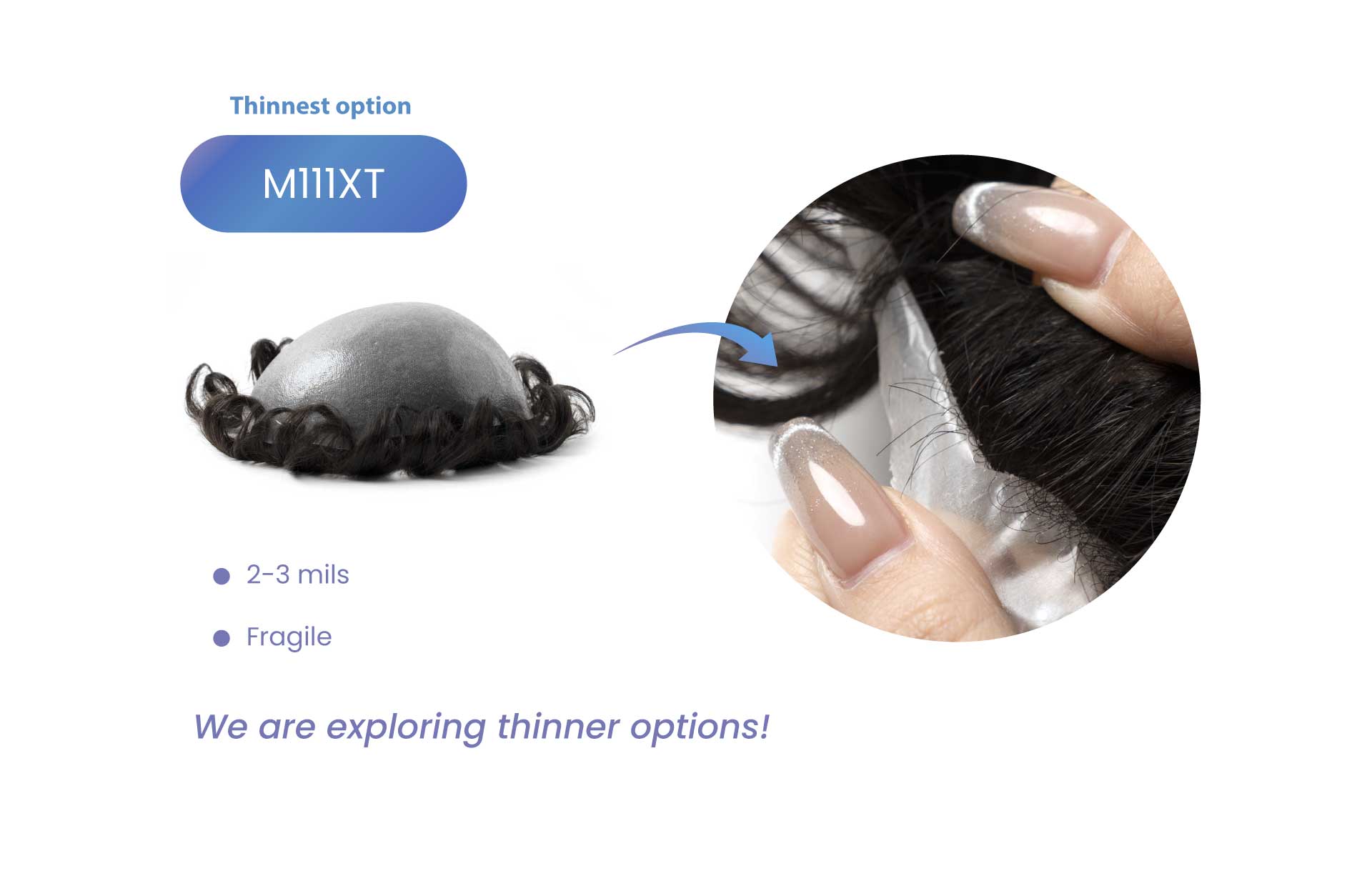
Our M111XT is a fragile skin base hair system. It has been effective; however, we are exploring thinner options. While we've had some success in testing, achieving consistency for production remains a challenge. The thinner we go, the more fragile the hairpiece becomes.
Right now, the thinnest option we have is four mils. We’re considering moving to 3 mils or even 2 mils, but it's a tough challenge. The hair thickness is about 3 mm, and once it's folded, it becomes thicker than the base, which complicates the adhesive process.
Many companies advertise products that claim to be 2 mils or even 1 mils thick. This creates confusion for customers because they often promote their products as incredibly thin. However, these thickness measurements are typically taken before the hair is applied and the final coatings are completed. After the final coating, achieving a thickness of 2 mils is impossible, and 3 mils is also challenging.
Some companies' misleading advertising regarding thickness doesn't provide customers with complete information; they focus only on the base layer without considering the final product.
19. The sides of my hair and beard get dyed, but after 10 days, they look different.
So, when it comes to hair care, especially with colored hair versus natural gray hair, there's a bit of a challenge. Suppose you typically get your hair colored every month but have noticed that the roots start to show differently after about ten days, especially if you have gray hair coming in. In that case, the issue is this: if you're coloring your hair, you want everything to match, so having gray roots can be tricky. However, as your hair grows, those gray strands start turning, creating a contrast that doesn't look great.
Instead of completely covering the gray, you could leave a small percentage of gray. This allows for a more blended look. You can leave a few gray strands visible by combing in the color. This way, the grays on the sides will match with the ones on the top, creating a more natural appearance.
Also, having a few gray hairs can add a distinguished look, especially for guys. They often come across as more natural than that stark, solid color, which can look artificial as they grow. So, consider leaving some grays there; they can enhance your overall look!
Gone are the days when people wanted to hide the fact that they were weaning a hair system. Now, men’s hair systems have become so natural-looking, comfortable, and convenient that more and more men are encouraging others to get a full head of hair back while looking younger and more confident.
With advancements in technology and accessibility, more people are discovering the benefits of hair systems as a viable solution for hair loss. If you have more questions or want to learn about the products Superhairpieces offers, feel free to reach out or explore our website!
 Likes
Likes



 USD
USD












